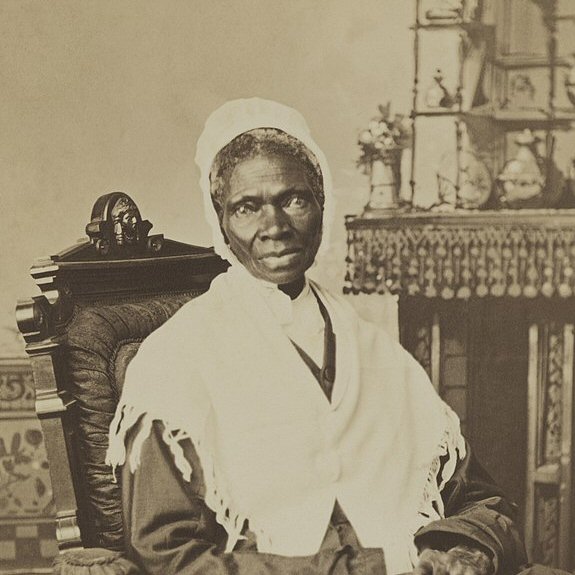 |
"Bias & Bigotry" |
||||
| More... |
Sojourner Truth was born into slavery in 1797 in Swartekill, Ulster County, New York, with the birth name Isabella Baumfree. She was the daughter of James and Elizabeth Baumfree, who were also enslaved. Throughout her early life, Truth was sold several times, experiencing harsh conditions and brutal treatment from various slave owners. In 1826, a year before New York’s abolition of slavery, she escaped to freedom with her infant daughter, Sophia, finding refuge with an abolitionist family, the Van Wagenens, who bought her freedom for twenty dollars. The mid-19th century was a period of intense social and political activism in the United States, with movements advocating for the abolition of slavery and the rights of women gaining momentum. Truth emerged as a powerful advocate in both movements after her conversion to Christianity in 1829, which strengthened her resolve to fight injustice. She moved to New York City in 1829, where she worked as a housekeeper and became involved in the Methodist Church, which further deepened her involvement in the abolitionist cause. Her life took a significant turn in 1843 when she felt a spiritual calling; changing her name to Sojourner Truth, she embarked on a mission as a traveling preacher and advocate for abolition and women’s rights. Sojourner Truth is best known for her extemporaneous speech on racial inequalities, "Ain’t I a Woman?" delivered at the Ohio Women’s Rights Convention in 1851. This speech highlighted the intersectionality of race and gender oppression in a powerful and personal way, challenging prevailing notions of racial and gender inferiority and advocating for equality. Her activism was not limited to speeches; she helped recruit black troops for the Union Army during the Civil War and worked with freed enslaved people, helping them to adjust to life after slavery. Sojourner Truth’s relentless advocacy and her ability to mobilize people through her oratory skills made her a legendary figure in both the abolitionist movement and the early women’s rights movement. Her legacy lives on as a symbol of strength and the fight for justice and equality. Reference: Wikipedia.org |
||||
|
|
